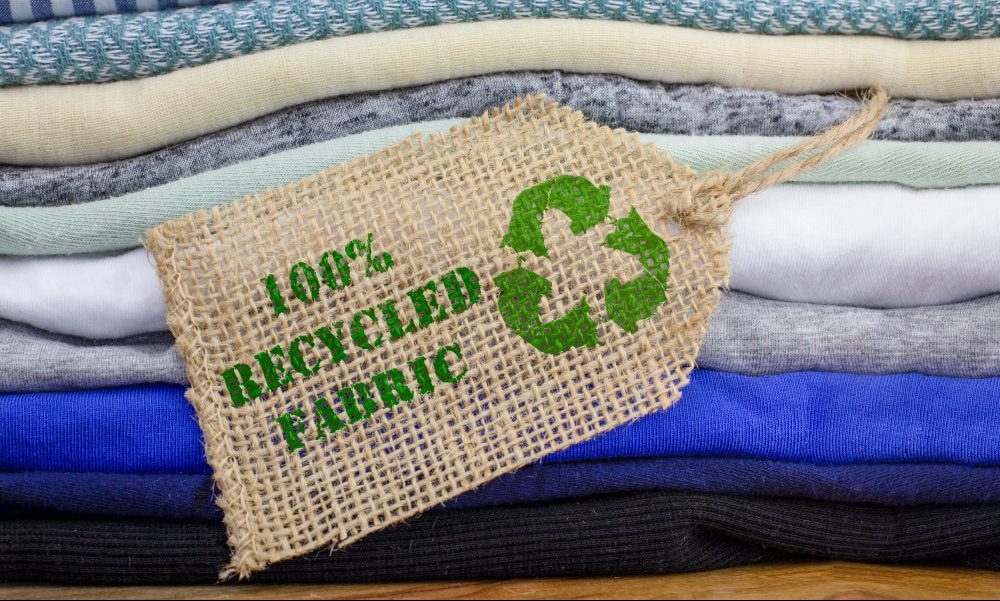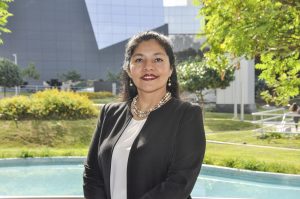
Sustainable Fashion and Textiles in Latin America
Interview with Rosa Patricia Larios-Francia – Researcher and Director of the Center for the Study of Textile Innovation, of the University of Lima, Peru

How did the idea of developing the Center for Textile Innovation Studies at the University of Lima arise?
The University of Lima created this project in 2013. It is an academic-industrial scenario that fulfils the objective of being a model of productive business management and that supports the exploration of strategies by applying an active learning teaching methodology, where the student relates to the industrial world through the development of business and productive management of a textile clothing company, so that both the student and the teacher can explore the specific strategies at play in the industry, as well as the approaches of fashion companies in areas as varied as product design and development, brand management, supply chain management, occupational health and safety, ergonomics, total maintenance, logistics, production and commercial management.
What do you consider the main achievements and contributions of this Center of Studies?
In Peru, the textile and clothing sector is the third largest contributor to the manufacturing GDP after the oil refining industry and non-metallic products. It generates around 400,000 direct jobs and almost 900,000 indirect jobs, that is why the generation and transfer of knowledge from our university is essential to sustain such an important industry. In 2019 we organized an international congress on textile innovation -CONIIDS, with the participation of the most important institutions worldwide in the textile field, from Germany, United States, Italy, France, Argentina, Colombia, where the advances in sustainability, value chain and industry 4.0 applied to the textile and fashion sector were shared with entrepreneurs, designers, students and researchers.
To complement our capabilities, we are the only Peruvian university that is part of The Lectra Education Program. This is complemented by an agreement with INEXMODA and Fashion Snoops, with foresight platforms for the generation of textile entrepreneurship from our classrooms.
We have also signed an agreement with the Italian Trade Agency and the Association of Textile Machinery Manufacturers – ACIMIT to establish the first Italian-Peruvian Textile Technology Centre in our facilities, which will support the transfer of technology in textile processes with the use of pilot textile plants for the training of our students and entrepreneurs.
How did your academic and research work influence the preparation of the book “Sustainable Fashion and Textiles in Latin America”?
As a researcher in the field of MSME management, fashion, textiles, handicrafts, sustainability, innovation, among others, I have been able to learn from developments in these areas globally. At the 2019 CONIIDS we had the pleasure of having as a speaker Dr Miguel Angel Gardetti, director of the Center for Studies on Sustainable Luxury of Argentina, author of more than twelve books on textile sustainability, who invited me to be part of this great project, “Fashion and Sustainable Textiles in Latin America”, so that after almost two years of processes, we can offer this book with 16 extraordinary chapters that we are sure will serve as motivation for new business initiatives in sustainability. We are very grateful for the reception of the Call of Papers and for the high quality of each of the productions of academics and practitioners.
How do you approach the challenge of sustainability in the textile and fashion industry in this book?
This book presents different cases of successful application of sustainability methodologies and tools with different actors in the textile and fashion value chain, from interventions in native communities, work with artisans, entrepreneurs, designers and businesspeople. Tools such as circular economy, upcycling, eco-design, sustainable aesthetics, which made it possible to improve processes and generate sustainable development. It also presents review chapters where the contributions in the field of policy and regulations in sustainable fashion, concepts of aesthetics, fashion, and minimalism as strategies for design processes, analysis of indicators that will support companies in the analysis of their environmental impacts are presented.
Could you briefly share some of the most inspiring or revealing cases related to sustainability in Latin America?
Each of the chapters presented are relevant and serve the reader as a guide for the implementation of sustainability strategies regardless of the size of their organizations. For example, the chapter Non-governmental Organization Support for Sustainable Artisan Business presents five case studies of different textile chains and presents the outline of the Model of Product Development Training Impact on Artisan Capabilities and Sustainable Business Success, which can be implemented by other initiatives.
The chapter Pursuing a circular and sustainable textile industry in Latin America analyses the profiles of the textile industry in the main countries of the continent, taking into account aspects of social awareness, the environment and labor issues. It describes how Mexico, Brazil, Colombia, Uruguay, Chile and Argentina have developed their sustainable development agenda in the textile sector. How Mexico has introduced smart textiles in its product proposal, the improvement in production speed and the introduction of personalized products by Colombia. The development of sustainable raw materials such as Peru, Brazil, Argentina and Uruguay with organic cotton, wool and camelid hair. Brazil and Uruguay with the development of biological fibres and the use of ecological materials. This is a holistic look at the efforts of the countries through their state institutions, private companies and the academy.
What recommendations would you give to entrepreneurs in the textile and fashion industry in relation to sustainability?
Entrepreneurs in the textile and fashion industry should establish cross-cutting sustainability strategies for all their processes, which should be aimed at minimizing any undesirable environmental impact of the product life cycle, should consider working together with all stakeholders to improve working conditions throughout the value chain, aligning themselves with good ethics, best practices and international codes of conduct, and should promote more sustainable consumption patterns. This will not only result in improved internal costs, but above all in competitive advantages in an industry with so many players and be socially, environmentally and economically sustainable.
What is your opinion about the development that the textile and fashion industry is having in Latin America and what aspects do you consider important to strengthen competitiveness and accelerate growth?
In the last five years we have seen a positive reaction from the textile and fashion chain in Latin America, many of these initiatives have been promoted by researchers and designers in interventions in the actors at the beginning of the chain such as small producers, artisans and communities. On the other hand, large textile companies are investing in new technologies that ensure the reduction of polluting waste, as well as changes in their processes and above all in their organizational culture, many of them are obtaining certifications for their products and processes. It is very encouraging to know about all these efforts.

